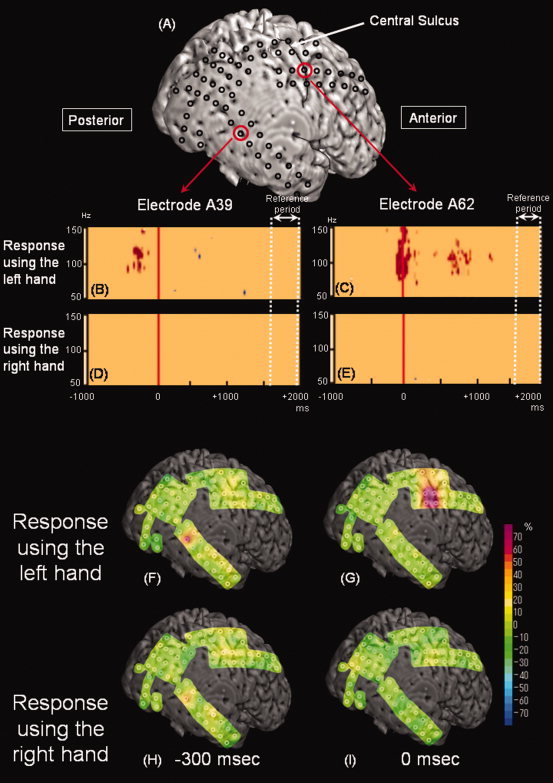Figure 1.

Time‐frequency analysis of γ‐oscillations relative to “the onset of button‐press” in patient 13. (A) Subdural electrodes were placed on the right hemisphere. (B and C) In the auditory–motor task when the subject was required to provide responses using the left hand, significant γ‐augmentation (red) involving 90–130 Hz was noted at electrode A39 located in the right superior temporal gyrus at 360–210 ms prior to the onset of button‐press. Subsequently, significant γ‐augmentation involving 75–165 Hz was noted at electrode A62 located over the right central sulcus between −110 ms and +100 ms relative to the onset of button‐press. Furthermore, significant γ‐augmentation involving 80–135 Hz was noted in the same site between 660 and 990 ms following the onset of button press; this late γ‐augmentation may be associated with button‐release movement. Neurostimulation of this electrode site elicited movement of the left‐sided fingers. (D and E) In the task with the right hand used for motor responses, no significant γ‐augmentation was noted at electrode A39 or A62. (F and G) In the task for the left hand, “γ‐range amplitude” was increased by 77% at electrode A39 in the right superior temporal gyrus at −300 ms relative to the onset of button‐press and increased by at least 70% at multiple sites overlying the central sulcus and postcentral gyrus at the onset of button press. (H and I) In the task for the right hand, “γ‐range amplitude” was increased by 43% at electrode A39 at −300 ms relative to the onset of button press but the magnitude of γ‐augmentation did not reach significance defined in this study. No significant γ‐augmentation was noted in the precentral or postcentral gyrus. [Color figure can be viewed in the online issue, which is available at wileyonlinelibrary.com.]
